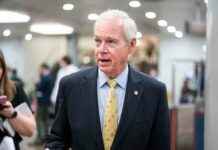Uber just released their first-quarter results, and let’s just say, it’s been a bit of a rollercoaster ride for them. They managed to exceed analysts’ expectations when it came to earnings per share, coming in at a whopping 83 cents compared to the expected 50 cents. But when it came to revenue, they fell a bit short, hitting $11.53 billion instead of the anticipated $11.62 billion. As a result, their shares took a bit of a hit, dropping about 5% after the report came out.
In the first three months of 2025, Uber saw a 14% increase in revenue, climbing up from $10.13 billion in the same period in 2024. Their net income also saw a significant improvement, landing at around $1.78 billion or 83 cents per share for the quarter. This is a major jump from the net loss of $654 million, or a loss of 32 cents per share, that they experienced a year earlier.
Looking ahead, Uber’s CEO Dara Khosrowshahi and CFO Prashanth Mahendra-Rajah are feeling pretty optimistic. They’re expecting gross bookings to reach between $45.75 billion and $47.25 billion in the current quarter, with adjusted earnings before interest, taxes, depreciation, and amortization falling in the range of $2.02 billion to $2.12 billion.
However, not everything is sunshine and rainbows for Uber. In April, the Federal Trade Commission decided to throw a wrench in their plans by suing them over alleged “deceptive billing and cancellation practices” related to their subscription service, Uber One. Khosrowshahi seemed a bit puzzled by the lawsuit, noting that the subscription service is actually growing quite rapidly and that canceling it is a piece of cake. He encouraged people to try it out for themselves before passing judgment.
Despite these challenges, Uber’s biggest segments, including their ride-hailing business and food and grocery delivery service, saw an increase in bookings year over year. Mobility gross bookings hit $21.18 billion, up 13% from the previous year, while delivery gross bookings reached $20.38 billion, marking a 15% increase.
The company also boasted an increase in their monthly active platform consumers, which grew to 170 million, a 14% jump from the first quarter of the previous year. Users booked approximately 3.04 billion trips during the first quarter of 2025, reflecting an 18% increase from the same period in 2024.
In a somewhat controversial move, Uber announced that employees would now be required to come into the office three days a week instead of two, including some remote staff. They also tweaked their monthlong paid sabbatical benefit, now requiring employees to have eight years at the company instead of five. Khosrowshahi defended these changes at a recent all-hands meeting, emphasizing the importance of teamwork in the office.
On the bright side, Uber is making strides in the autonomous vehicle arena, viewing it as a significant opportunity for the company’s future. They’ve allowed users to book robotaxi rides in certain U.S. markets and order food for delivery via autonomous vehicles in others. The company has even reached an “annual run-rate” of 1.5 million autonomous vehicle trips.
With partnerships with companies like Waymo, Volkswagen, Avride, May Mobility, and Aurora, Uber is positioning itself as a key player in the autonomous ride-hailing and freight services sector. They’ve also teamed up with international AV companies like WeRide, Pony.AI, and Momenta.
Overall, Uber seems to be on the right track despite a few bumps in the road. As Khosrowshahi put it, “Our company is executing really well, but we need to be at the top of our game.” And with five new autonomous vehicle announcements in the past week, it looks like Uber is gearing up for an exciting future ahead.
















